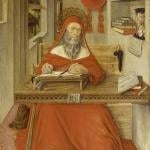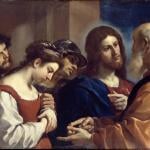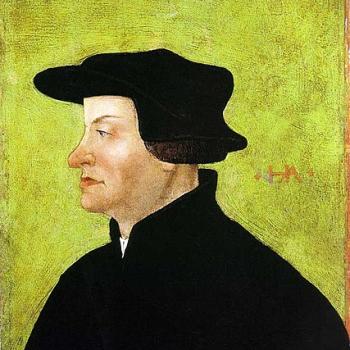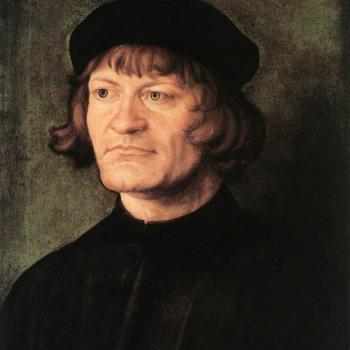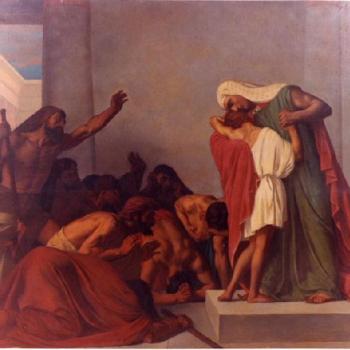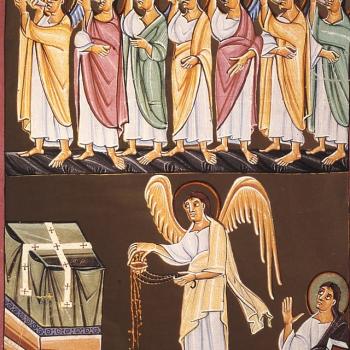Including the Biblical Case for Icons
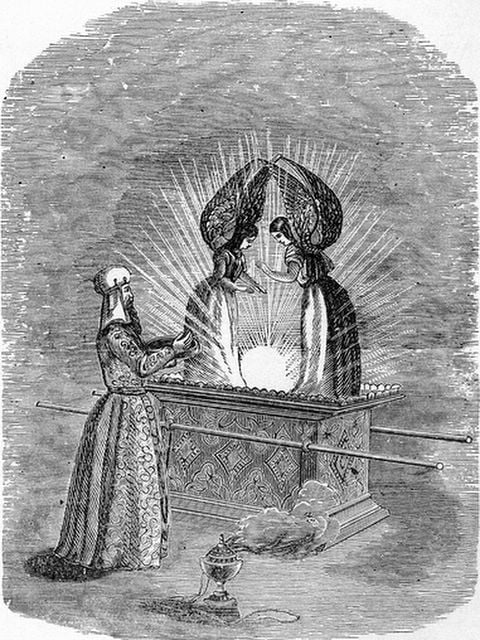
Edward Josiah Stearns (1810-1890) was an Episcopal clergyman from Maryland and author of several books. His volume, The Faith of Our Forefathers (New York: Thomas Whittaker, 1879), was a reply to The Faith of Our Fathers (1876), by James Cardinal Gibbons (1834-1921), one of the best and most well-known Catholic apologetics works, with an emphasis on scriptural arguments and replies to Protestant critiques of Catholicism. It had sold over 1.4 million copies by the time of its 83rd edition in 1917 and was the most popular book in the United States until Gone With the Wind was published in 1939. This volume highly influenced my own development as a soon-to-be Catholic apologist in the early 1990s: especially with regard to my usual modus operandi of focusing on “biblical evidence” for Catholicism.
The words of Rev. Stearns will be in blue. I use RSV for biblical citations.
***
It is noteworthy that the Archbishop does not cite a single passage of Scripture in proof of image-worship. (p. 213)
He’s clearly asserting that there is no such passage. I can think of at least three:
Exodus 33:9-10 When Moses entered the tent, the pillar of cloud would descend and stand at the door of the tent, and the LORD would speak with Moses. [10] And when all the people saw the pillar of cloud standing at the door of the tent, all the people would rise up and worship, every man at his tent door. [worship of God through a cloud]
2 Chronicles 7:3-4 When all the children of Israel saw the fire come down and the glory of the LORD upon the temple, they bowed down with their faces to the earth on the pavement, and worshiped and gave thanks to the LORD, saying, “For he is good, for his steadfast love endures for ever.” [4] Then the king and all the people offered sacrifice before the LORD. [worship of God through fire]
1 Chronicles 16:4 Moreover he appointed certain of the Levites as ministers before the ark of the LORD, to invoke, to thank, and to praise the LORD, the God of Israel.
One might retort that the ark of the covenant didn’t represent God, so how could this passage refer to image-worship? It’s because God was present above the ark in a visible cloud between the carved cherubim on its lid: what was called the “mercy seat”:
Leviticus 16:2 and the LORD said to Moses, “Tell Aaron your brother not to come at all times into the holy place within the veil, before the mercy seat which is upon the ark, lest he die; for I will appear in the cloud upon the mercy seat.
Numbers 16:42 (“the cloud covered it, and the glory of the LORD appeared“) and Deuteronomy 31:15 (“And the LORD appeared in the tent in a pillar of cloud“), prove, in their use of “appear” in relation to a cloud that this is also the case in Leviticus 16:2. God doesn’t just say that He will be “present”, but that He will “appear” in this cloud. Therefore, it’s a third instance of God being worshiped through an image.
1 Samuel 4:4 . . . the ark of the covenant of the LORD of hosts, who is enthroned on the cherubim . . .
Exodus 25:22 There I will meet with you, and from above the mercy seat, from between the two cherubim that are upon the ark of the testimony . . . (cf. 30:6)
Numbers 7:89 And when Moses went into the tent of meeting to speak with the LORD, he heard the voice speaking to him from above the mercy seat that was upon the ark of the testimony, from between the two cherubim; and it spoke to him
The burning bush proves that God Himself was there in the bush that Moses saw. In other words, worshiping it was the same as worshiping God (which is the fundamental idea involved in icons, though they are venerated — not worshiped or adored — when creatures are involved):
Exodus 3:4-6 When the LORD saw that he turned aside to see, God called to him out of the bush, “Moses, Moses!” And he said, “Here am I.” [5] Then he said, “Do not come near; put off your shoes from your feet, for the place on which you are standing is holy ground.” [6] And he said, “I am the God of your father, the God of Abraham, the God of Isaac, and the God of Jacob.” And Moses hid his face, for he was afraid to look at God.
The same idea is reiterated in references to “face to face” and the pillars:
Exodus 13:21 And the LORD went before them by day in a pillar of cloud to lead them along the way, and by night in a pillar of fire . . .
Exodus 33:11 Thus the LORD used to speak to Moses face to face, as a man speaks to his friend. . . .
Numbers 12:5 And the LORD came down in a pillar of cloud, and stood at the door of the tent, and called Aaron and Miriam; and they both came forward. (cf. Ps 99:7)
Numbers 14:14 . . . thou, O LORD, art seen face to face, and thy cloud stands over them and thou goest before them, in a pillar of cloud by day and in a pillar of fire by night. (cf. Neh 9:12)
Deuteronomy 5:4 The LORD spoke with you face to face at the mountain, out of the midst of the fire,
Deuteronomy 31:15 And the LORD appeared in the tent in a pillar of cloud . . .
Deuteronomy 34:10 And there has not arisen a prophet since in Israel like Moses, whom the LORD knew face to face,
Sirach 24:4 I dwelt in high places, and my throne was in a pillar of cloud.
Rev. Stearns cites — in disagreement — Catholics explaining these teachings:
St. Thomas Aquinas . . . says, “The same reverence is to be given unto the image of Christ and to Christ himself: and by consequence, seeing Christ is adored with the adoration of latria (the highest kind of worship), his image is to be adored with the adoration of latria also,” . . . — Summ. part 3, q. 25, art. 3. And Azorius says, ”It is the constant judgment of theologians that the image is to be honored and worshipped with the same honor and worship wherewith that is worshipped whereof it is an image.” . . . Jo. Azor. Institut. Moral,, t. i. 1. 9, c. 6 . . .
Such is the image-worship taught and practised in the Roman Church. (p. 206)
Image-worship is a superstition of the heart, not of the head; hence its danger. (p. 211)
I have just provided the biblical rationale: none of which Rev. Stearns seems to be familiar with. Live and learn . . . As usual, the Protestant contra-Catholic argument is insufficiently biblical to an alarming extent.
I didn’t even get in to highly related topics such as the fascinating biblical data regarding the angel of the Lord and theophanies or christophanies.
*
***
*
Photo credit: The Ark and the Mercy Seat, illustration in Treasures of the Bible by Henry Davenport Northrop, published by International Publishing Company, 1894 [public domain / Wikimedia Commons]
Summary: Anglican apologist Edward Josiah Stearns claimed that image-worship of God is unbiblical. I produce three biblical passages / passage-clusters that prove otherwise.


